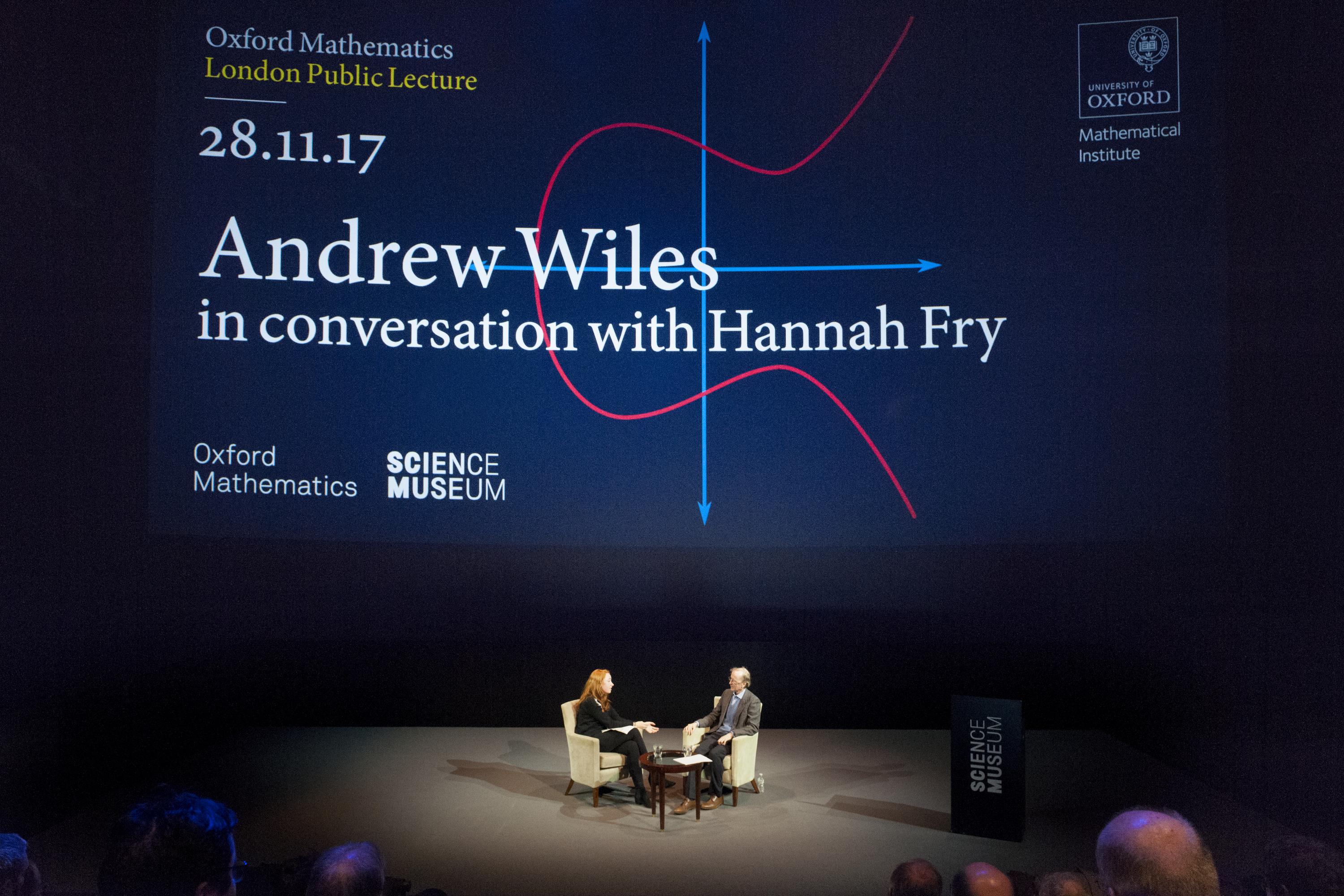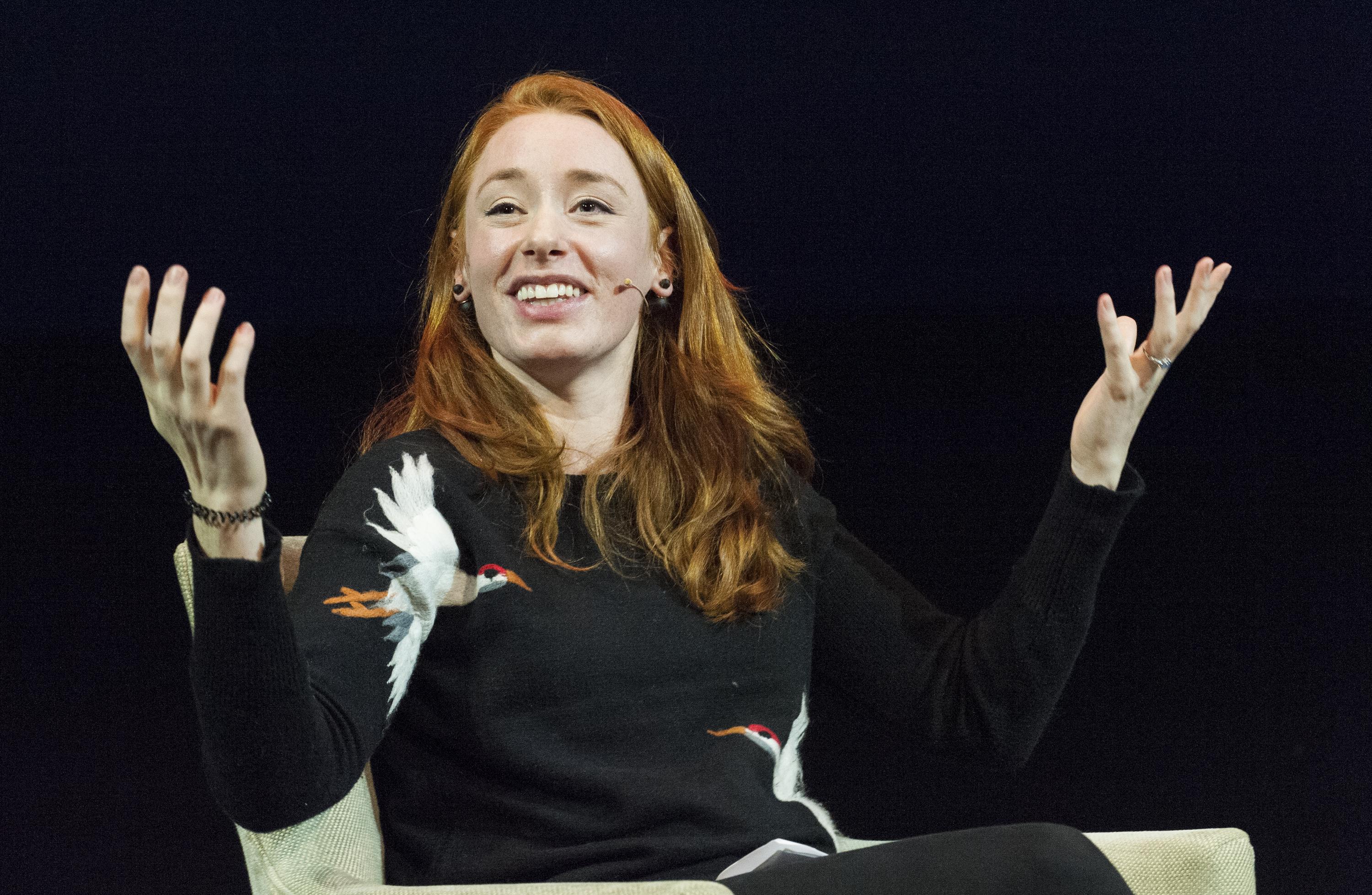One of the world’s greatest mathematicians, Sir Andrew Wiles, made a rare public appearance in the Science Museum this week to discuss his latest research, his belief in the value of struggle, and how to inspire the next generation.
Sir Andrew made global headlines in 1994 when he reported that he had cracked Fermat’s Last Theorem, so named because it was first formulated by the French mathematician Pierre de Fermat in 1637.
His triumph while working in Princeton marked the end of a long gruelling struggle for Sir Andrew, who first became entranced by the theorem in the early sixties, when he was 10 years old.
Why did Fermat exert such a tight grip on him? The romance of this mathematical story, ‘captivated me’, he said. ‘Fermat wrote down this problem in a copy of a book of Greek mathematics. It was only found after his death by his son.’
Last year, in recognition of his towering achievement, Sir Andrew was awarded the Abel Prize, the mathematics’ equivalent of the Nobel Prize, and today the Royal Society Research Professor of Mathematics at Oxford’s Mathematical Institute continues to explore new horizons in mathematics that have been opened up by his work on Fermat.

After a brief lecture, Sir Andrew was joined by mathematician and broadcaster Dr Hannah Fry of University College London, a familiar face in the Science Museum, having this year presented Britain’s Greatest Invention from the museum’s storage facility near Swindon, and been one of the faces associated with the museum’s Tomorrow’s World partnership with the BBC, Royal Society, Open University and Wellcome.
Despite his years of struggle, and the scepticism of his peers, did he always believe it was possible to prove Fermat’s Last Theorem? ‘Oh yes,’ said Sir Andrew. “I am always quite encouraged when people say something like: “You can’t do it that way.”’
Did Fermat himself really have a proof? Based on the mathematics of his day, ‘the probability is almost zero,’ though he added: ‘it is just conceivable.’
Sir Andrew realised early on in his attempt on the problem that conventional mathematical approaches had been exhausted but became intrigued once again in 1986 when he realised a new route to crack the problem had opened up in mainstream mathematics, through the study of what are called elliptic curves.
During years of intense study, he placed his faith in the ‘three Bs’: Bus, bath and bed. In other words, the power of the subconscious, when his mind could relax and was given rein to wander.
Sir Andrew is a specialist in number theory, a branch of mathematics dedicated to the study of integers. So, asked Dr Fry, are there other areas of pure mathematics that he wished he had more time to study? ‘I confess that I was addicted to number theory from the time I was ten years old,’ he said.’ I have never found anything else in mathematics that appealed quite as much.’

Dr Fry pointed out that the implication was, of course, that there were other fields of undergraduate mathematics where the Abel prize winner felt he was weaker. ‘Definitely true’, he said.
Even so, he found a way to sate his addiction as a student. ‘There was not much number theory in undergraduate mathematics’ so he would ‘sneak off to the library to try and read Fermat. ‘But Fermat had this really irritating habit of writing in Latin,’ said Sir Andrew. Even today, his grasp of Latin remains ‘minimal’.
Terms such as ‘elegance’ and ‘beauty’ are bandied around by many mathematicians. What do they mean? They are hard to explain but Sir Andrew likened the mathematical equivalent of experiencing the rapture of beauty to walking down a path to explore a garden by the great landscape architect Capability Brown, when a breathtaking vista suddenly beckons. In other words, elegance in mathematics ‘is this surprise element of suddenly see everything clarified and beautiful.’
But you should ‘not stare at it non-stop’, he warned, else the majesty will fade, as is also the case with great paintings and music.
Today he is still walking through the great garden of mathematics, ‘the language of science,’ he said. Another way Sir Andrew described his lifelong passion to the rapt audience was as a ‘beautiful edifice…the most permanent thing there is.’
Industry and government realise that mathematicians are the lifeblood of a modern economy but are concerned by the lack of uptake of maths. Most young people ‘do have a real appetite for mathematics’, said Sir Andrew, but they are put off because, he believes, their teachers are not viscerally interested in the subject.
It is in primary schools that teachers need to kindle sparks of interest in the subject but many of them aren’t actually mathematicians because so many maths graduates end up in better paid careers.
Young people need to learn from someone who truly enjoys the subject, and shows their enjoyment, he said. When the teachers don’t truly care about mathematics, ‘that gets passed on.’ One solution to attracting better teachers, he added, is to ‘pay them more’. His comment was greeted with warm applause.
Is skill at mathematics more a matter of nature than nurture? Sir Andrew disagrees with the depiction of mathematicians in the movie Good Will Hunting, which suggests success means being born with an aptitude for mathematics so that ‘it is easy.’

He told the audience that there are some things you are born with that might make it easier but, he stressed, ‘it’s never easy.’
‘Mathematicians struggle with mathematics even more than the general public does,’ said Sir Andrew. ‘We really struggle. It’s hard.’
But, he added, ‘we learn how to adapt to that struggle.’ Intriguingly, he said that some young, bright PhD mathematicians might find it hard to adapt to a life with less instant gratification from solving problems, and ‘can’t cope with being stuck for more than 24 hours’.
To be a great research mathematician, it takes character more than just technical skill. ‘You need a particular kind of personality that will struggle with things, will focus, won’t give up.’
Paradoxically, he suggested that those who are not so good at mathematics are able to cope better with research and the frustration of being stuck.
What is the next great challenge in mathematics? Sir Andrew referred to the Millennium Prize Problems, seven problems in mathematics that were highlighted by the Clay Mathematics Institute in 2000, each with a $1 million prize.
One, the Poincaré conjecture, was solved in 2003. The most famous of the remaining six, and the one that he would bet on to be cracked next, is the Riemann hypothesis, a great unsolved problem identified in 1900 by the highly influential German mathematician David Hilbert. ‘It says something about the way prime numbers are distributed,’ he said.
He encouraged young mathematicians to attempt these ‘impossible problems’ while they are teens or undergraduates, to give them a taste for research, but to set them to one side when starting a career ‘to be responsible.’
The special event was introduced by Martin Bridson, Whitehead Professor of Pure Mathematics, Head of the Mathematical Institute, and by Dame Mary Archer, Chair of the Science Museum Group, who listed various mathematics initiatives in the museum.
Dame Mary pointed out that the museum’s Wonderlab interactive gallery has launched a new mathematics show for young visitors, called Primetime, to celebrate the remarkable impact of mathematics on everyday life.
Thanks to the help of Prof Marcus du Sautoy of Oxford, also one of the museum’s advisors, the Bodleian commissioned a carbon dating project of the ‘Bakhshali manuscript’, part of which is on display in the museum, which revealed the first written record of zero, a highly-influential number, dates back four centuries further than most scholars had thought.

Since it opened last December, Mathematics: the Winton Gallery, has welcomed 1.2 million visitors and won two awards. In the audience was David Harding, who with his wife Claudia donated £5m to fund the gallery, designed by the late Dame Zaha Hadid, to inspire future generations of mathematicians.
Also in the packed IMAX theatre was the TV presenter Dara O’Briain, William Shawcross, Chairman of the Charity Commission for England and Wales, Ilyas Khan of Cambridge Quantum Computing, school teachers and many young mathematicians – perhaps even a future Abel prize-winner or Fields medalist.